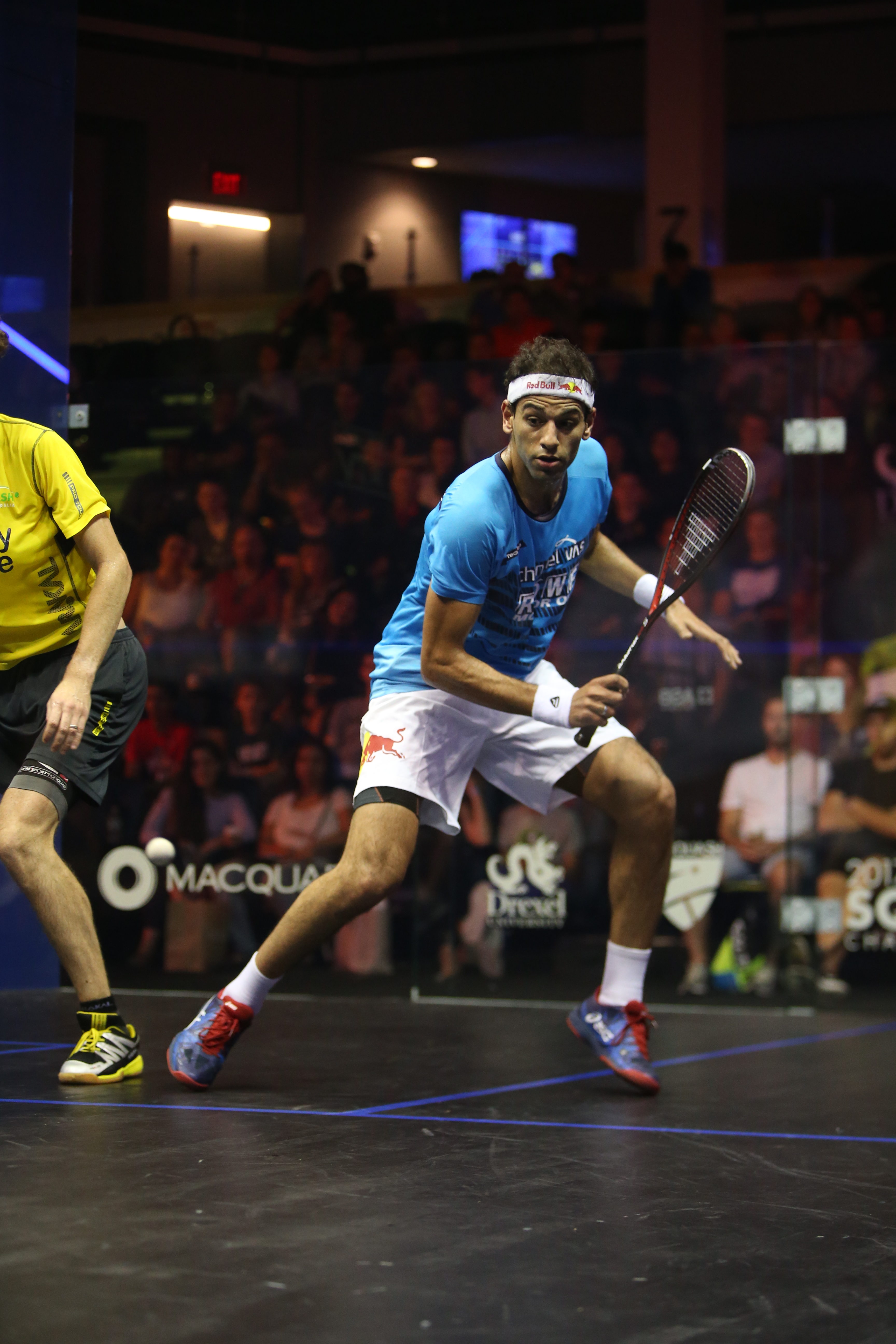By Richard Millman
If we are to be successful squash players, the way we carry ourselves as human beings sometimes needs to be countermanded and positively untrained. A certain assumption that most people habitually employ actually opposes the successful conduct of a game of squash.
Let me explain by way of a little experiment. Put yourself in the center of a space where you can move freely in any direction. Walk purposefully forwards. Where do you find that you are leaning? Forwards—correct? Next, purposefully walk backwards. Where are you leaning? Backwards, of course. If you try moving sideways, you will find the same thing is true.
In ordinary, everyday life, human beings lean their weight and balance towards the direction of movement. This is both because it is comfortable to do so and because balance is an indicator of interest: we physically attend toward that in which we are interested.
However, when we play squash, we are not normal human beings engaged in every-day behavior. In fact, we take on the behavior of hunters. Our interest is focused primarily on that which we are hunting—namely the ball.
The problem with balance for the squash player is that we have spent our entire lives habitually leaning toward the direction in which we are moving. This behavior is a disaster for someone who wishes to continually engage with the ball.
If you are thinking that you should concentrate on or watch the ball, you are not wrong. But if that is all you are thinking, then your understanding of those words is insufficient to play squash at a competitive level and may even be counter-productive. Focus and attention in the sport of squash are functions of the entire being— mental, physical and emotional—and must be continuously employed. Even a momentary loss of focus can be disastrous. If you are focused elsewhere at the moment your opponent redirects the ball, your response time will be delayed or even completely misdirected.
The most frequent example of this for beginning players is the common error of not watching the ball. But for a more advanced player there are some equally disastrous (although not as obvious) behaviors that lead to similar consequences.
If you are a person who has grown up leaning in the direction that in which you are moving, squash is a problem for you unless you learn to curb that behavior. Just before your opponent hits the ball, you should focus on the ball. Equally, after he strikes the ball, you should continue to focus on the ball. If you have been well trained, you will continue to lean your physical focus toward the ball as you move into position to continue the rally.
The problem occurs in the next phase. Unless you are trained not to do so, the likelihood is that you will, having sent the ball on its way, start moving back to a position that you feel you can best defend the court against your opponent’s next shot. Perceived wisdom has informed you that you are supposed to get back to the T. You will then lean toward your new objective, the T, because humans lean in the direction of movement. Your unscrupulous opponent will hit the ball exactly when your attention is firmly aimed away from the ball and towards the T.
How often have you played a drop shot and launched yourself back toward the T, only to be caught out by a second drop? Or played a drive from the front of the court only to be caught out by a drop volley or a boast? These situations can be avoided if you train yourself to keep a physical connection with the ball at all times and learn to focus your weight and balance on the ball—not the direction in which you are moving. This is the secret of staying connected in squash.





